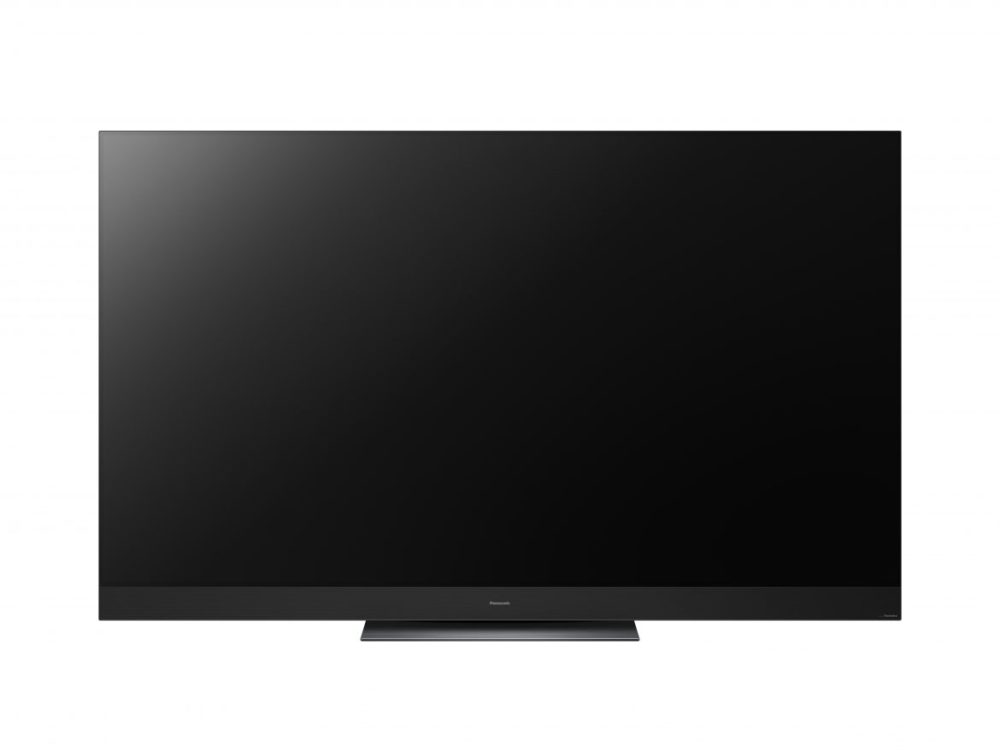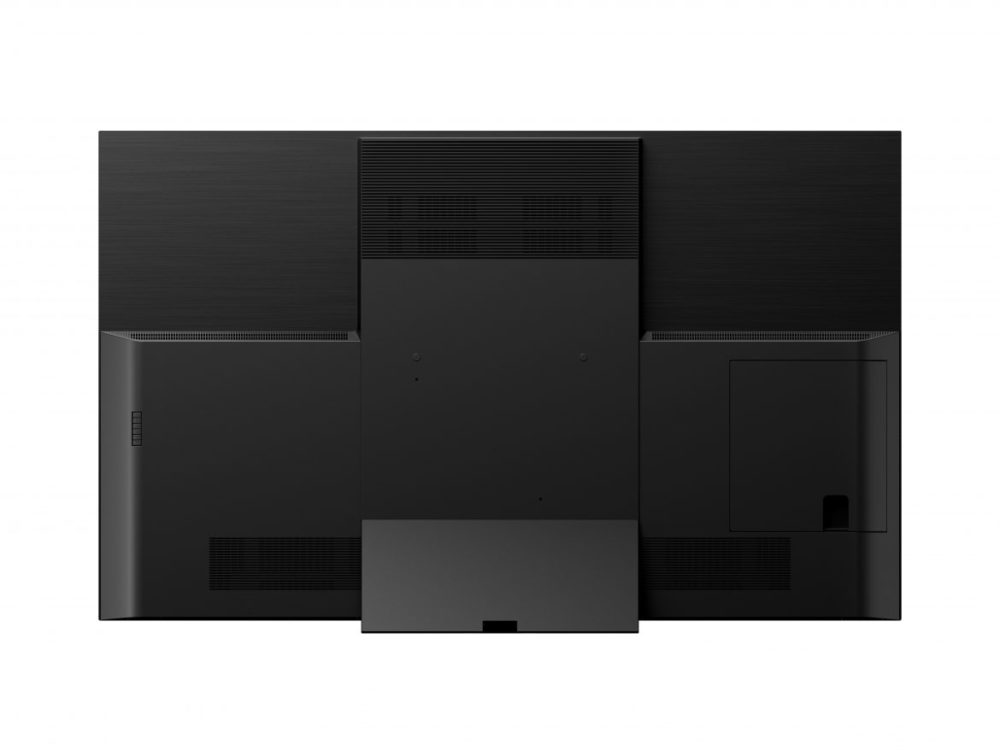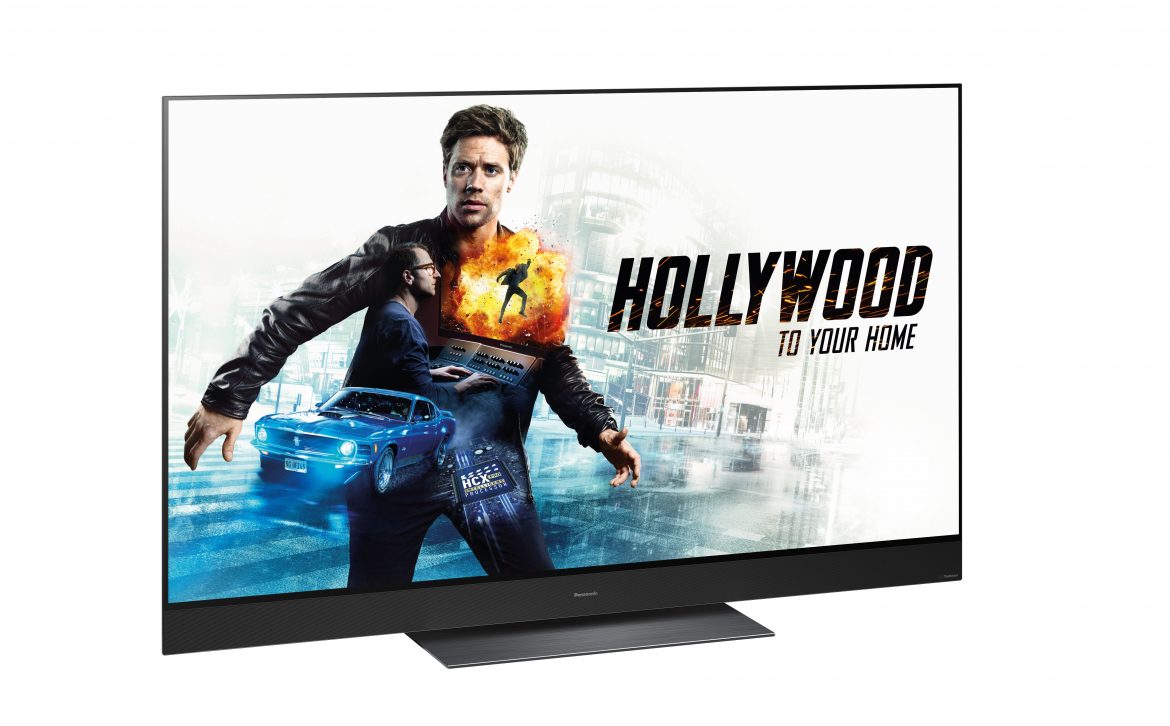TL;DR
Panasonic's GZ2000 OLED TV sets a new benchmark, boasting exceptional peak brightness (over 900 nits) and a stunning implementation of Dolby Vision, making it ideal for cinephiles. Its HCX Pro processor delivers factory-accurate colors, while integrated Dolby Atmos speakers provide an impressive audio experience for a TV. Though lacking full HDMI 2.1, it excels in gaming and upscaling, even for older content. This TV is a professional-grade powerhouse that approaches the quality of much more expensive Hollywood-grade monitors. Discover if this Panasonic masterpiece is the ultimate TV for you – read the full review!
Update: You can now read our review of the successor OLED model Panasonic TX-65HZ2000.
Panasonic has consistently demonstrated exceptional expertise in television technology. In recent years, their models have frequently outperformed competitors, despite their relatively smaller presence in the Swedish market. Their OLED displays are utilized by industry professionals, including editors and color graders, in both Swedish and Hollywood film production. This year’s OLED lineup, designated GZ (following last year’s Panasonic FZ800), represents a significant technological advancement, incorporating features such as Atmos sound, Dolby Vision, and enhanced peak brightness. Could this be the definitive television? Let’s investigate.
Dolby Vision HDR Implementation
Panasonic has supported HDR with both the fundamental, static HDR10 (a baseline for HDR compatibility) and the dynamic, royalty-free HDR10+. However, HDR10+ has struggled to achieve widespread adoption within the entertainment industry, receiving active support from a limited number of content creators, notably 20th Century Fox (now a subsidiary of Disney) and Amazon Prime. Dolby Vision, Dolby’s proprietary, licensed technology (requiring specific hardware), has maintained a leading position, a gap that appears increasingly difficult to overcome. The majority of Ultra HD 4K releases predominantly support Dolby Vision, as do streaming services such as Netflix, Apple+, and, most recently, Disney+. While the technical merits of each dynamic format remain a topic for theoretical debate, the improvement offered by Dolby Vision (DV) is readily apparent on content previously available “only” in HDR(10). The technology dynamically optimizes colors and contrast on a frame-by-frame basis (with 12-bit depth). The resulting visual fidelity is impressive, positioning the Panasonic GZ2000 as one of the few premium OLED televisions currently supporting all major dynamic and static HDR formats. To fully leverage Dolby Vision from UHD 4K Blu-ray discs, a Dolby Vision-enabled UHD player is essential; the Panasonic UB9000 remains a reference-level choice for this purpose well into the 2020s.

Exceptional Peak Brightness Performance
OLED technology, as is well known, allows each pixel to function independently, transitioning from absolute black to maximum luminance. This luminance, quantified in nits (candela per square meter), is a key performance metric. The Panasonic GZ2000 achieves a peak brightness exceeding 900 nits, surpassing competitors such as the Sony A9, which reaches approximately 600 nits. This difference translates into a tangible and readily discernible improvement. Beyond simply delivering increased brightness, higher nits values contribute to a greater dynamic range, allowing for enhanced detail rendition within bright scenes. The GZ2000 excels in this regard. The panel also incorporates robust burn-in mitigation features, including pixel shifting, screensavers, and automated maintenance routines. As a general guideline, sustained display of static images with bright elements should be avoided on any OLED display.
Gaming Capabilities
Our standard testing procedure involves extensive measurement and calibration of all reviewed televisions. However, with the GZ2000, this process feels largely redundant. While individual OLED panels may exhibit minor variations, the new HCX Pro processor, developed by Panasonic’s engineers, ensures exceptional accuracy straight out of the box. Modes such as THX and Professional 1 and 2 provide the most accurate color reproduction, with minimal processing enabled by default (verification is recommended). Delta deviations are typically below 3%, indicating that any potential adjustments would be imperceptible to the human eye. This translates to near-perfect plug-and-play performance: simply connect the display, select the appropriate mode, and enjoy. However, disabling any “optimizer” settings, such as BFI and IFC (Black Frame Insertion and Intelligent Frame Creation), is recommended. These systems, designed to create a “smoother flow,” often introduce soap opera effects and 3:2 pulldown artifacts, ultimately degrading image quality. For subtle motion smoothing, Intelligent Frame Creation can be used sparingly, particularly with television series content.

The HDMI ports, consistent with previous models, include two side-mounted ports (one with ARC) and two rear-facing ports (inaccessible when wall-mounted). Given the increasing prevalence of multi-input modern amplifiers (often with seven or more HDMI inputs), the two hidden HDMI ports are unlikely to be a significant limitation. A minor drawback is the GZ2000’s incomplete implementation of the HDMI 2.1 standard, supporting only ALLM (Auto Low Latency Mode, which automatically engages the low-latency Game Mode when a compatible console, such as the Xbox One X, is connected). Consequently, HFR (High Frame Rate, 120 Hz) and VRR (Variable Refresh Rate) are not supported. While this omission is somewhat disappointing for a flagship model, these features remain relatively nascent in terms of available content and their practical impact on the viewing experience requires further evaluation.
Integrated Dolby Atmos Audio
The Panasonic GZ2000 is unique among OLED televisions in offering an integrated, Dolby Atmos-certified speaker system. This system comprises three front-firing speakers and two upward-firing speakers designed to utilize ceiling reflections (the television allows adjustment for ceiling height to optimize performance). This integrated audio solution adds approximately 7 kg to the television’s weight (totaling 35 kg, compared to 28 kg for the previous model) and contributes to its premium price point. However, the resulting audio performance is commendable. The television automatically detects the appropriate picture mode, HDR signal, and audio track. Optional on-screen notifications can confirm detection of Dolby Vision or Dolby Atmos content. The soundstage produced by these integrated speakers is surprisingly engaging. While the soundstage is naturally front-biased (true surround sound requires rear speakers, resulting in a 3.0.2 configuration), the ceiling reflection effectively creates an immersive experience with reference films such as The Greatest Showman and Bumblebee (both featuring Atmos soundtracks). Bass response is the primary limitation, although an external subwoofer can be connected via the television’s headphone jack. For users seeking a simplified audio solution without the complexity of a separate home theater system, the GZ2000’s built-in Atmos implementation performs admirably.

For users who already possess a high-quality home theater system and are primarily focused on picture quality upgrades, Panasonic offers alternative GZ models: the 1500, 1000, 960, and 950. These models share a similar panel to the GZ2000 (although the GZ2000 retains some specific advantages, as detailed in the concluding section).
Picture Quality Assessment
With the UB9000 connected and loaded with UHD 4K reference discs, the television was evaluated across a range of sources, including streaming content, video games, and other modern media devices.
In summary, the Panasonic GZ2000 delivers exceptional picture quality with both native 4K content (with or without HDR) and upscaled digital sources. As noted previously, the display offers impressive peak brightness, making it suitable for both brightly lit and completely dark viewing environments. In the latter, the deep blacks create a stunning sense of depth, while intricate details remain visible, as exemplified by Hugh Jackman’s performance in The Greatest Showman. Upscaling of SDR (non-HDR) and Full HD (Blu-ray) content is implemented effectively, negating the need to immediately replace an existing film library. The primary benefit of UHD 4K lies in HDR, rather than resolution alone, and the GZ2000 accurately switches color palettes between REC 709 (SDR) and BT2020 (HDR). Even DVDs (technically low resolution) exhibit impressive visual quality on the Panasonic GZ2000. Given that SDR remains the standard for DVDs, Blu-rays, and the majority of television broadcasts, the GZ2000’s strong SDR performance is a significant advantage.

Disney’s live-action remake of The Lion King (2019) stands as a premier UHD 4K reference disc, delivering exceptional picture and sound quality. The film’s predominantly digital nature and state-of-the-art visual effects blend seamlessly when presented via a capable display. The image is sharp and vibrant, yet maintains a sense of realism. The motion-captured lions integrate convincingly within the visual landscape presented on the GZ2000’s 65″ screen. The Arri Alexa 65 and IMAX cameras’ 2K resolution benefit significantly from the UHD 4K presentation compared to the Full HD Blu-ray version. This film is ideally experienced on a display like the GZ2000 (the film is presented in HDR10; the potential improvements offered by HDR10+ or Dolby Vision remain speculative).
The Greatest Showman offers not only a compelling musical narrative, but also a high-quality UHD release. While limited to HDR10, the 4K master provides deep blacks and vibrant dynamics, particularly in the introductory scene (“This is the greatest show”). HDR10+ or DV could potentially enhance the highlights (sunlight, burning rings), but the film’s overall visual composition mitigates this limitation. The Dolby Atmos track is best experienced with the GZ2000’s integrated speakers, although a subwoofer is recommended for improved bass response.
Bumblebee distinguishes itself as one of the better Transformers films and features a reference-grade release. The Panasonic GZ2000’s Dolby Vision implementation delivers both nuanced and dynamic HDR, enhancing specific areas while maintaining overall detail. Scene 11, featuring the protagonists riding in the bubble, exemplifies this. The interior details, including the leather seats, radio controls, and sunset, are rendered with exceptional clarity and vibrancy.
The Last Jedi, despite its divisive reception within the Star Wars saga, benefits from a genuine 4K master on its UHD 4K release and warrants viewing on this OLED display. Dolby Vision provides excellent balance on Panasonic’s 2019/2020 flagship model, highlighting details, contrast, and lighting effects with both subtlety and precision, even in scenes dominated by darkness and rain. We anticipate similar performance from the visually impressive The Rise of Skywalker when its UHD 4K release is available.
Doctor Strange, while lacking dynamic HDR on its UHD 4K release, serves as a strong example of the GZ2000’s ability to render lighting and particle effects. The scene where The Ancient One sends Strange on a visual journey through his consciousness showcases this capability. The HDR10 implementation is used effectively, and the wide shots (filmed in IMAX 6.5K) exhibit a significant improvement in detail and clarity.
Television series are increasingly available in 4K with HDR. The final season (eighth) of Game of Thrones provides a compelling example. A superb transfer from the 4K master, combined with the Panasonic HCX Pro’s contrast management, allows for clear detail and nuanced color reproduction in The Longest Night, a scene that previously appeared as a muddled mess when streamed via HBO Nordic. Concerns regarding “banding” artifacts, potentially visible in Game of Thrones’ smoke, twilight, and snow effects, proved unfounded.
Finally, Alita: Battle Angel, arguably Robert Rodriguez’s finest work, provides a compelling example of HDR10+. The Panasonic GZ panel renders the film’s diverse scenes – encompassing cityscapes with crowds, nocturnal battles, and evening-lit sports arenas – with exceptional fidelity, showcasing the television’s overall capabilities.
Netflix streams 4K content with Dolby Vision and Dolby Atmos, albeit with significant compression to maintain data transfer rates below 35 Mbit/s. While this compression limits picture and sound quality compared to disc-based media, Netflix remains a leading streaming service for high-resolution and high-fidelity content. The Panasonic GZ2000 integrates seamlessly with Netflix, including a dedicated app that supports Dolby Vision and Atmos without issue. Acclaimed titles such as Marriage Story were presented with excellent picture and sound quality.
Disney+, while not officially launched in Sweden, functions correctly and benefits from Dolby Vision support in compatible titles. Amazon Prime actively supports HDR10+ and demonstrates the format’s potential, although not all of its original productions support it. Users can now choose based on their preferred service and content format.
Excellent Gaming Performance
Despite unsubstantiated claims to the contrary, the Panasonic OLED delivers responsive gaming performance. Software updates and potentially inaccurate initial measurements may have contributed to these misconceptions. While top-tier LED displays may offer faster response times, they typically fall short of OLEDs in terms of picture quality and black levels. The Panasonic GZ2000’s measured 21ms response time is well below the 30ms threshold where input lag becomes perceptible to most users. ALLM support ensures automatic switching to the low-latency Game Mode (provided the connected console transmits the correct signal). Game Mode prioritizes responsiveness over image processing, so disabling it for non-gaming content is recommended to maximize picture quality.

Panasonic GZ2000 65″ OLED – Final Assessment
Several senses.se contributors work professionally in the film industry and have experience with dedicated reference monitors costing upwards of 300,000 SEK. While the Panasonic GZ2000 does not match the performance of these specialized displays, its performance within the consumer market remains unsurpassed. Its capabilities approach those of dedicated film editing equipment, which comes at a significantly higher cost. The GZ2000’s use in color grading by some filmmakers underscores its accuracy and fidelity. For those prioritizing picture quality upgrades, selecting the GZ model that best aligns with budget and needs is a reasonable approach (although the Dolby Atmos system included on the premium model is a worthwhile addition). The dynamic HDR formats (HDR10+ and Dolby Vision) leverage the GZ2000’s light output and tone-mapping capabilities to enhance detail. For users seeking the highest possible picture quality in 2019/2020, investing in the Panasonic GZ2000 is recommended, despite its premium price.
The Panasonic GZ2000 stands as the best OLED television currently available and the finest OLED model Panasonic has produced to date, owing largely to its Dolby Vision implementation and superior panel brightness. This achievement builds upon Panasonic’s established track record in OLED technology (EZ950 (2017) and FZ800 (2018)). The limited rear-facing HDMI ports and the largely redundant built-in OS are minor shortcomings, given the widespread availability of affordable and superior streaming devices such as the Apple TV 4K and Chromecast Ultra. The absence of full HDMI 2.1 support is a slight disappointment, particularly on a flagship model. However, this is a minor issue overall. The Panasonic GZ2000 represents an ideal television for film and gaming enthusiasts and earns our highest recommendation. It is the new reference display for 2020.
Picture Settings for Panasonic GZ2000/1500/1000/960/950
Profile Professional 1
Luminance 60
Contrast 90
Brightness 0
Colour 50
Tint 0
Sharpness 30
Colour temp. Warm2
Vivid color Off
Colour remaster Off
Ambient sensor Off
Noise reduction Off
MPEG Remaster Off
Resolution Remaster Off
Dynamic Range Remaster Off
Intelligent Frame Control Off
Advanced Settings
Contrast control Off
Color Gamut Native
White Balance
R-Gain -4
G-Gain +2
B-Gain 0
R-Cutoff 0
G-Cutoff 0
B-Cutoff 0
Option Settings
Game Mode Off (for film, On for games)
Screen settings
16:9 Overscan Off
Pixelorbiter On (protects against burn-in)

